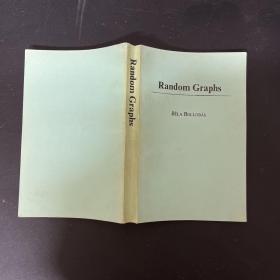
英文原版 Graphs on Surfaces 曲面上的图 图论 数学教授Bojan Mohar 精装 英文版 进口英语原版书籍
书籍内容简介可联系客服查阅,查书找书开票同样可以联系客服
¥ 1198 ¥ 1198 九五品
仅1件
作者Mohar, Bojan, and Carsten Thomassen
出版社Johns Hopkins University Press
ISBN9780801866890
出版时间2001-06
装帧精装
定价1198元
货号YB-82393
上书时间2024-06-27
- 最新上架
商品详情
- 品相描述:九五品
- 商品描述
-
内容摘要
Graph theory is one of the fastest growing branches of mathematics. Until recently, it was regarded as a branch of combinatorics and was best known by the famous four-color theorem stating that any map can be colored using only four colors such that no two bordering countries have the same color. Now graph theory is an area of its own with many deep results and beautiful open problems. Graph theory has numerous applications in almost every field of science and has attracted new interest because of its relevance to such technological problems as computer and telephone networking and, of course, the internet. In this new book in the Johns Hopkins Studies in the Mathematical Science series, Bojan Mohar and Carsten Thomassen look at a relatively new area of graph theory: that associated with curved surfaces. Graphs on surfaces form a natural link between discrete and continuous mathematics. The book provides a rigorous and concise introduction to graphs on surfaces and surveys some of the recent developments in this area. Among the basic results discussed are Kuratowski's theorem and other planarity criteria, the Jordan Curve Theorem and some of its extensions, the classification of surfaces, and the Heffter-Edmonds-Ringel rotation principle, which makes it possible to treat graphs on surfaces in a purely combinatorial way. The genus of a graph, contractability of cycles, edge-width, and face-width are treated purely combinatorially, and several results related to these concepts are included. The extension by Robertson and Seymour of Kuratowski's theorem to higher surfaces is discussed in detail, and a shorter proof is presented. The book concludes with a survey of recent developments on coloring graphs on surfaces.
相关推荐
-

预订 Deep Learning on Graphs,英文原版
九五品西安
¥ 590.00
-

Graphs in VLSI,英文原版
九五品西安
¥ 715.00
-

Random Graphs;随机图;英文原版
九品商丘
¥ 36.30
-

Graphs and Geometry,图形与几何,英文原版
九五品西安
¥ 972.00
-

Hands On(英文原版)
九品上海
¥ 100.00
-

On suicide 英文原版
九品广州
¥ 299.00
-

on democracy 英文原版
九品北京
¥ 18.00
-

英文原版:ON GADAMER
九五品上海
¥ 188.00
-

英文原版:ON LEIBNIZ
九五品上海
¥ 188.00
-

英文原版:ON ETHICS
九五品上海
¥ 348.00
— 没有更多了 —












以下为对购买帮助不大的评价